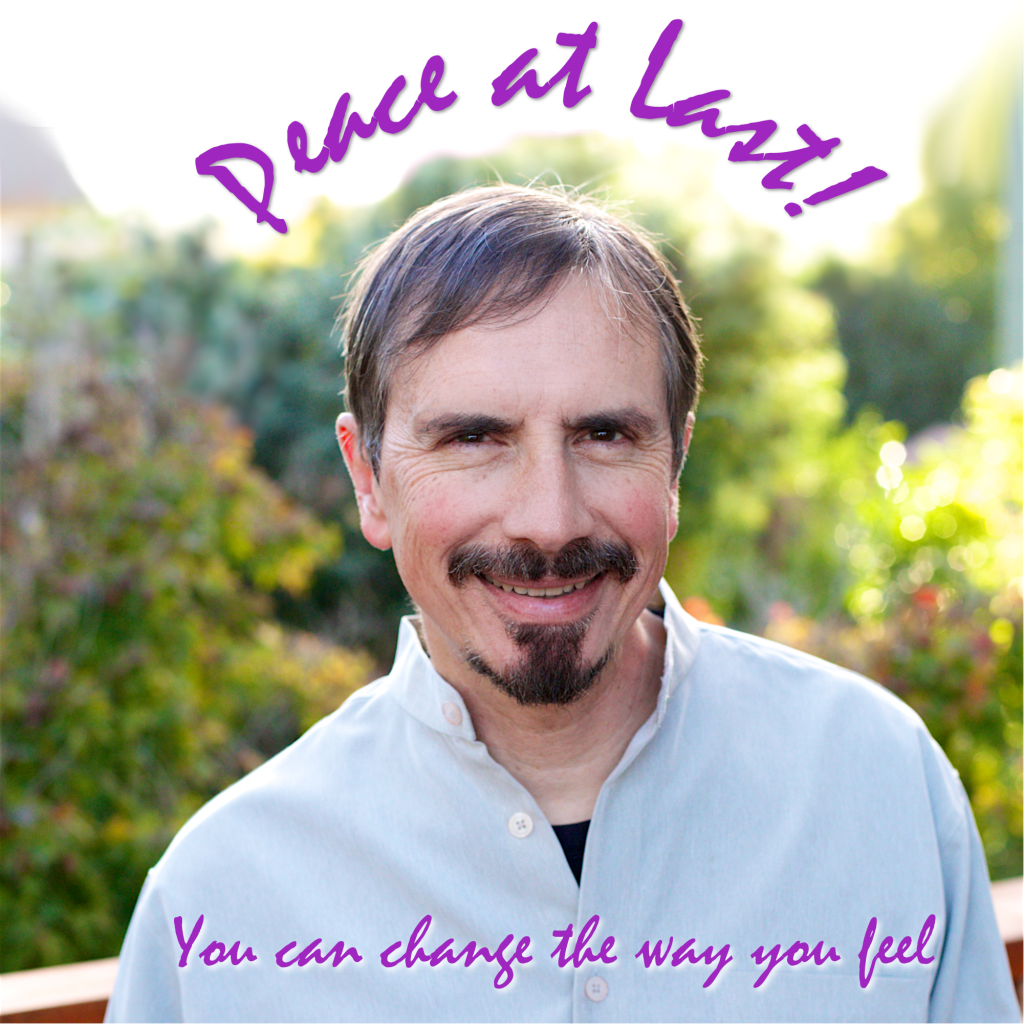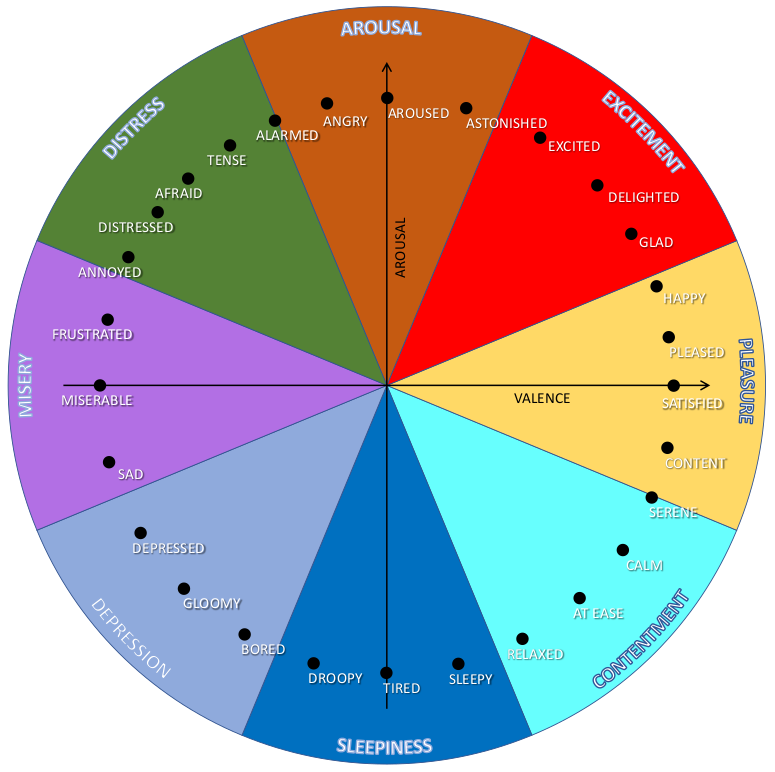
Let’s talk about emotions, today. Notice that I normally tend to use the word “emotions,” rather than the word “feelings.” The word “feeling” often tends to be ambiguous. When I used to ask untrained clients a question like “What are you feeling?” they would invariably answer in a sentence that started with, “Well, I feel like …”. It could be things like “I feel like I’m going to die,” “I feel like he’s judging me,” “I feel like I’m letting them down,” “I feel like something bad is going to happen,” etc. Those are not what I call “feeling words,” but judgments.
The Classical View of Emotions
The classical view of emotion, is the concept that we have evolved specific emotion circuits deep within our brains, and that they produce and encode a set of very basic emotions that have the same fingerprint in any human, and perhaps even in other mammals. When specific stimuli occurring in the world, these circuits will get triggered and produce the appropriate change in our body physiology, our neurochemistry, our perceived sensations, and finally in our behavior.
Furthermore, that theory claims that the basic set of emotions is so universal that any culture in the world can recognize which emotion someone expresses, just by looking at their face. Below, you’ll see the picture of a man in distress. He’s looking like he’s about to cry. This man is soccer player Cristiano Ronaldo, and the picture was taken in 2016, at the European Championship final, when Ronaldo was playing for Portugal’s national soccer team. France had just scored the decisive goal against his team.

Except that in that picture, the goal that Ronaldo had just witnessed was Portugal’s first goal against France, and the emotion displayed on his face is one of elation, and his watery eyes want to cry tears of joy. If you saw the picture before reading these words, you were primed to see a man who’s upset, and you probably agreed. It’s only in context that you could tell for sure what the expression on his face meant.
Affect and Interoception
Coming back to a definition of the word “emotion,” we consider an emotion starts with an internal sensation, using a sense called interoception. Interoception our sense of the internal state of our body. For instance, if I perceive what I label as “anxiety,” I feel a sort of constriction in the center of my chest. This is an example of interoception. But that doesn’t have to be uniquely related to emotions. If I have heartburn, I will also feel a strong feeling in the center of my chest, albeit somewhat different. That, too, is an example of interoception. The main difference between anxiety and heartburn is how I interpret the sensation, based on my context. How I give it an emotional meaning.
The concept of “affect” is your basic sense of feeling. It has two main components: Valence and Arousal. The Valence dimension goes from unpleasant to pleasant. The Arousal dimension goes from agitated to calm. Below is a circular diagram called the “Circumplex Model of Affect.” The feeling words are arranged around a circle, positioned roughly according to their level of Arousal and their level of Valence.

(Russell, 1980; the original paper did not place the words in such a neat circle)
A positive emotion will be associated with pleasant affect. A negative emotion will be associated with unpleasant affect.
Interoception and affect are hardwired in us, but our emotions are not. They are constructed, based on a large number of experiences we have had along our lives.
The Predictive Brain
According to Lisa Feldman Barrett, the brain’s job is to manage our energy budget. In order to manage this budget, the brain makes predictions. We predict what’s going to happen next and our brain manages our physiology accordingly.
Fine-Grained Emotional Concepts
The granularity of detail in how finely you can distinguish one emotion from another is a predictor of greater happiness and success in life. This capacity is called Emotional Intelligence, a term coined by Dan Goleman.
Practice
You’ll find below a handout with a list of feeling words. On the front side are words that correspond to a positive Valence—pleasant affect—and on the other side, words that correspond do a negative Valence. The negative side has a list that’s quite a bit longer than the positive side. Our culture has a finer resolution for uncomfortable emotions than it does for pleasant ones. But also our brain has a negative bias. Print out that list and expand your emotional vocabulary. When somebody asks you how you are doing, instead of replying a mundane “Fine!” try on the following feeling words, for size: “I’m feeling giddy, today!” “I’m quite cheerful, lad!” “Feeling mellow…”


Hello Dr Nye
or Fabrice as i know you in feeling good podcast.
I did not finish listening yet to episodes of your new podcast.
I’m just writing you to to say that I liked always your dialogues with Dr Burns .you were enriching them definitely
a lot.
I’m listening now to your own podcasts.
I want to wish you all success.
Samer Alhamwi
LikeLike
Thank you, Samer. It warms my heart to know that hearing me on Dr. Burns’s podcast got you here. Stay tuned for some interesting topics to come!… Best, Fabrice
LikeLike
Hi Dr. Fabrice, thanks for the hard work you put on this podcast. One question do you have a link for feeling words on Spanish?
LikeLike
Hi Frances, here is a link that covers quite a few of them: https://issuu.com/aperturapsi/docs/los_sentires_para_nominarlos
Hope it helps,
Fabrice
LikeLike
Loved the chart of feeling words. I’ve added yours to my collection. There’s another you’d probably be interested in, also based on the degree of energy and pleasantness: the Yale Mood Meter http://moodmeterapp.com/science/.
I was actually introduced to it via the show notes of Feeling Good podcast Corona Cast 6. It’s designed to improve emotional intelligence in kids, but it seems relevant for every age.
The best way to see the chart seems to be via an image search: https://www.google.com/search?q=mood+meter+chart&tbm=isch
LikeLike
What do you mean when you say that you are a “spiritual traveler”? I’ve never heard that term before, Thanks!
LikeLike